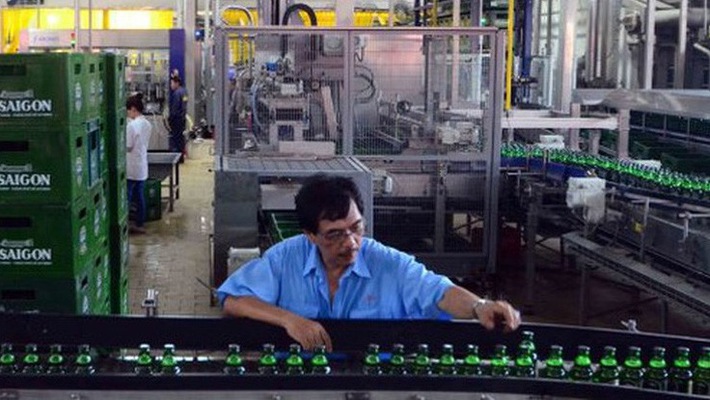
Vietnam Beverage’s foreign short-term loans to buy shares of Sabeco worth about 5 billion USD.
Two current concerning problems of the economy are the sudden increase in foreign borrowing of FDI enterprises and capital credit overflowing trend via peer to peer lending channels.
Looking at the 2.5 million billion dongs (49% GDP) in foreign debt of the country, recorded in the government’s report on loans usage and public debt management in 2017, and planning of 2018 Pham Xuan Hoe, Deputy Director of the Banking Strategy Institute (SBV) expressed his concerns:“I am very afraid that we will have to face the “debt bomb”, not in 2019 or 2020 but after 2020.” The expert believed that the debt crisis does not come from domestic sector but from debt financing activities of foreign invested businesses.
Mr. Pham analyzed that, of total 2017 national debt, short-term foreign loans of businesses and credit institutions in the form of self-borrowing in 2017 increased by 73% as compared to 2016. Of which, Vietnam Beverage’s foreign short-term loans to buy shares of Saigon Beverage Corporation (Sabeco) worth about 5 billion USD, account for a quarter of total national foreign short-term debt.
“The sudden increase in foreign short-term debt (mostly from self-borrowings of businesses and credit institutions) made national outstanding debt against GDP in 2017 increase to 49% of GDP, approaching national foreign debt threshold (50% GDP). This affected the debt safety index of the country and reduced its outstanding foreign loan balance, Vietnamese enterprises’ borrowings in the following years. It will be difficult for companies to access financing for business activities”, Mr. Pham emphasized.
While domestic enterprises’ ability to borrow foreign money is narrowing, the borrowing ability of credit institutions is also challenging. The statistics of the Ministry of Finance shows that total outstanding credit loans of credit institutions are at 130% GDP.
The second problem, according to Mr. Pham, is the P2P trend growing strong recently, especially when market’s demand for credit is still high. “Will this be the overflowing of credit supply from China to Vietnam?”.
It is still in the early stages so it is not yet a trend, Mr. Pham said, but it is a phenomenon that needs to be monitored because new credit channel tend to come along debt recovery problems.
P2P is a business model that uses online services to connect investors to individuals or businesses wanting to borrow money. This is a new trend that is growing rapidly in all markets across the world, especially in the context of Industry 4.0.
“I am concerned about this. The Forth Industry Revolution is flooding in and it is uncertain if we can take advantage of 4.0, especially when our regulatory policies are inadequate and stagnant compared to developmental reality”, Mr. Pham said.

















